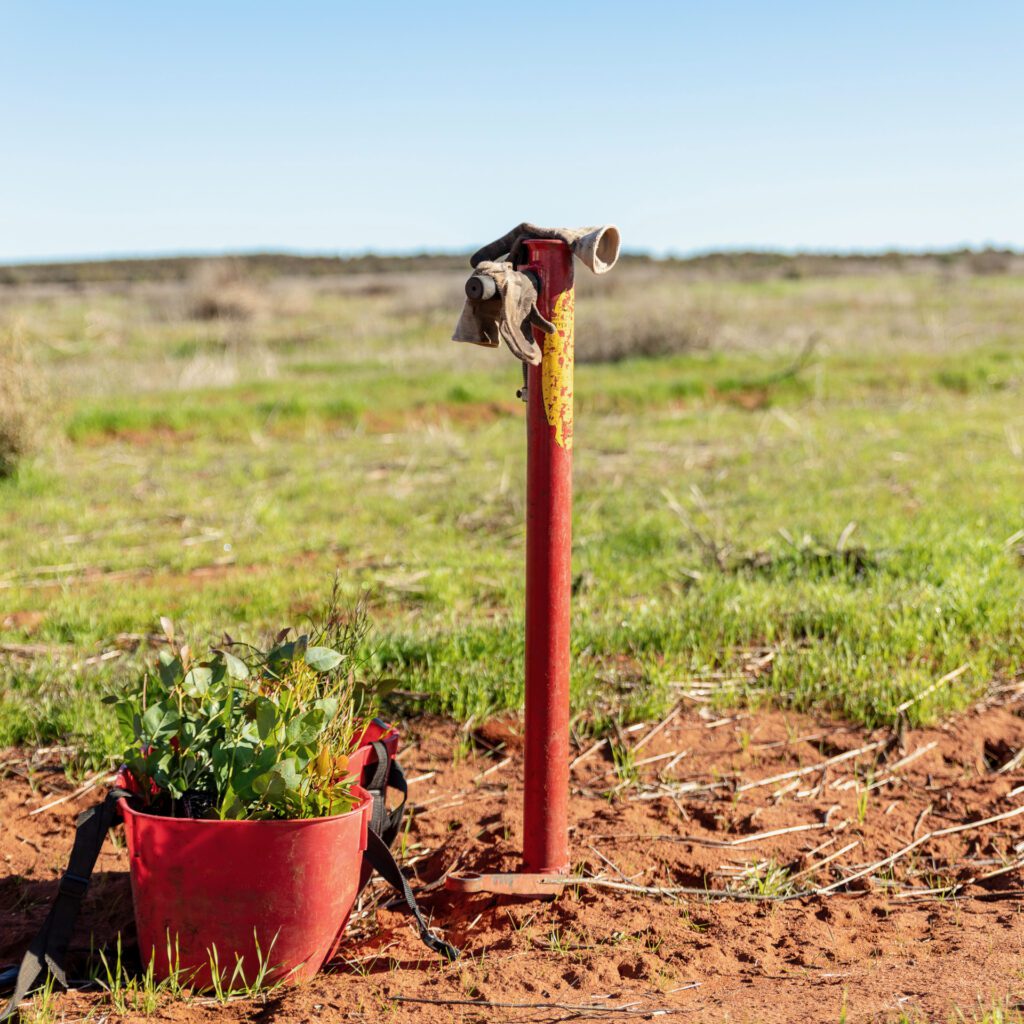Your Footprint. Australia’s Trees. Our Future.
Why Trees?
Trees play a critical role in maintaining safe levels of oxygen and carbon dioxide on our planet. They are a source of breathable oxygen and are vital in addressing climate change. Trees filter the air, sequester carbon, provide oxygen, conserve soil and water, prevent desertification, and protect and stabilise ground cover.
You can choose an amount below or enter your own chosen amount.
Set up regular monthly donations for an even greater impact.
When you donate a tree, you fund our planting projects across Australia.
We plant native trees and shrubs on degraded land. Each species planted is specially chosen to be appropriate for the land we are planting on.
A carbon offset is a tangible way of taking action for the climate.
In Australia, native trees play a crucial role in making our agricultural areas more sustainable. They help prevent salinity and soil erosion, while also providing shade, shelter, food, and habitat to native animals. Additionally, they are a valuable source of timber for fuel, wood, fodder, essential oils, gums, resins, latex, medicines, and shade.
The value of trees can’t be understated.


Have you ever thought about the world would be like without trees?
It would be pretty grim. In fact, a world without trees would be drastically different from the one we know today. Trees play a crucial role in sustaining life on Earth and their absence would have far-reaching consequences for the environment, ecosystems, climate, and for us as humans.
In order to understand our impact on the environment, we might calculate our carbon footprint, but in order to understand the importance of trees in Australia, we need to look at their footprint, and by that we mean their history.
The history of trees in Australia
The history of trees in Australia is one that spans millions of years. Trees have played a crucial role in shaping the landscape of this country that was once covered in vast ancient forests during the Mesozoic era, around 250 million years ago.
And that is just one fascinating fact about trees.
Did you know?
• Approximately 30 million years ago, Australia was characterised by lush rainforests and diverse plant life. As the country drifted northward and the climate changed, rainforests began to retreat, and Eucalypt forests started to dominate the landscape, becoming one of the country’s most defining flora features.
• For tens of thousands of years, Indigenous Australians have lived in harmony with the land, using controlled burning practices to manage the landscape, in turn providing the growth of certain tree species and maintaining a balanced ecosystem.*
• In the late 18th century, significant changes occurred in the landscape. European land-use practices, such as agriculture and logging, altered ecosystems and affected native tree populations.
• Over the years, several threats have emerged that affect the health and diversity of Australia’s trees and forests. This includes habitat destruction, invasive species, climate change and altered fire regimes.
Australia’s trees – why are they so important?
Australian trees are significant and important for many reasons, ranging from ecological significance to culture and economic value.

Our trees:
• Improve health and wellbeing
• Protect rare species
• Provide much needed habitats
• Improve the water table and water quality
• Protect and increase biodiversity
• Protect our soil from erosion and salinity
It’s projected that safeguarding and restoring our landscape through tree planting over the coming decades in our forests, peatlands and agricultural areas could reduce over 50 gigatonnes (that’s 50,000,000,000 tonnes!) of carbon emissions that would otherwise enter the atmosphere. Maintaining our Australian landscapes through the planting of native trees can, and does, make a difference in reducing climate change.
Find out more about our native tree planting projects that are making a difference right here in Australia.
Biodiversity and trees
Biodiversity is the variety of all living things; the different plants, animals and micro-organisms, the genetic information they contain and the ecosystems they form.
The link between biodiversity and trees cannot be understated. Trees are a critical component of ecosystems, and their presence significantly influences biodiversity. Here are some of the key connections between biodiversity and trees:
• Habitat and shelter
• Species richness
• Food sources
• Pollination
• Soil microorganisms
• Ecosystem services
• Genetic diversity
Find out more about the importance of protecting biodiversity and how our projects are making a difference to the flora and fauna of Australia.


The future of trees in Australia is our future
The future of our trees is subject to various challenges and opportunities. Well planned tree planting projects can be a valuable intervention to address some of the most critical challenges of our time, such as mitigating climate change, conserving biodiversity and providing food, wood and income to small landholders
The future of Australia’s trees is dependent on what we do today.
Whether you are an individual, business owner, community group or landholder, you can join us by taking a proactive and sustainable approach to native tree planting here in Australia.
(Holl & Brancalion, 2020)
(Ref: Guidance for successful tree planting initiatives – Brancalion – 2020 – Journal of Applied Ecology – Wiley Online Library)
* Please see the Firesticks Alliance for more information.
